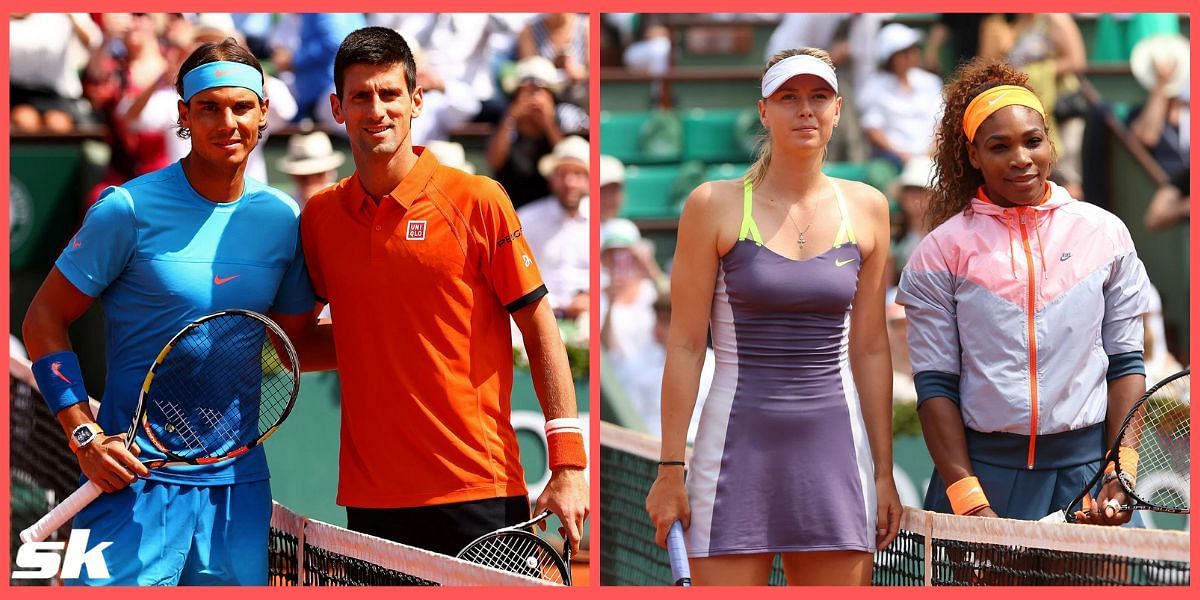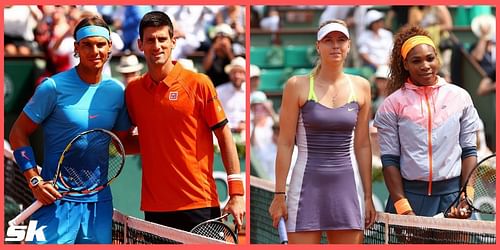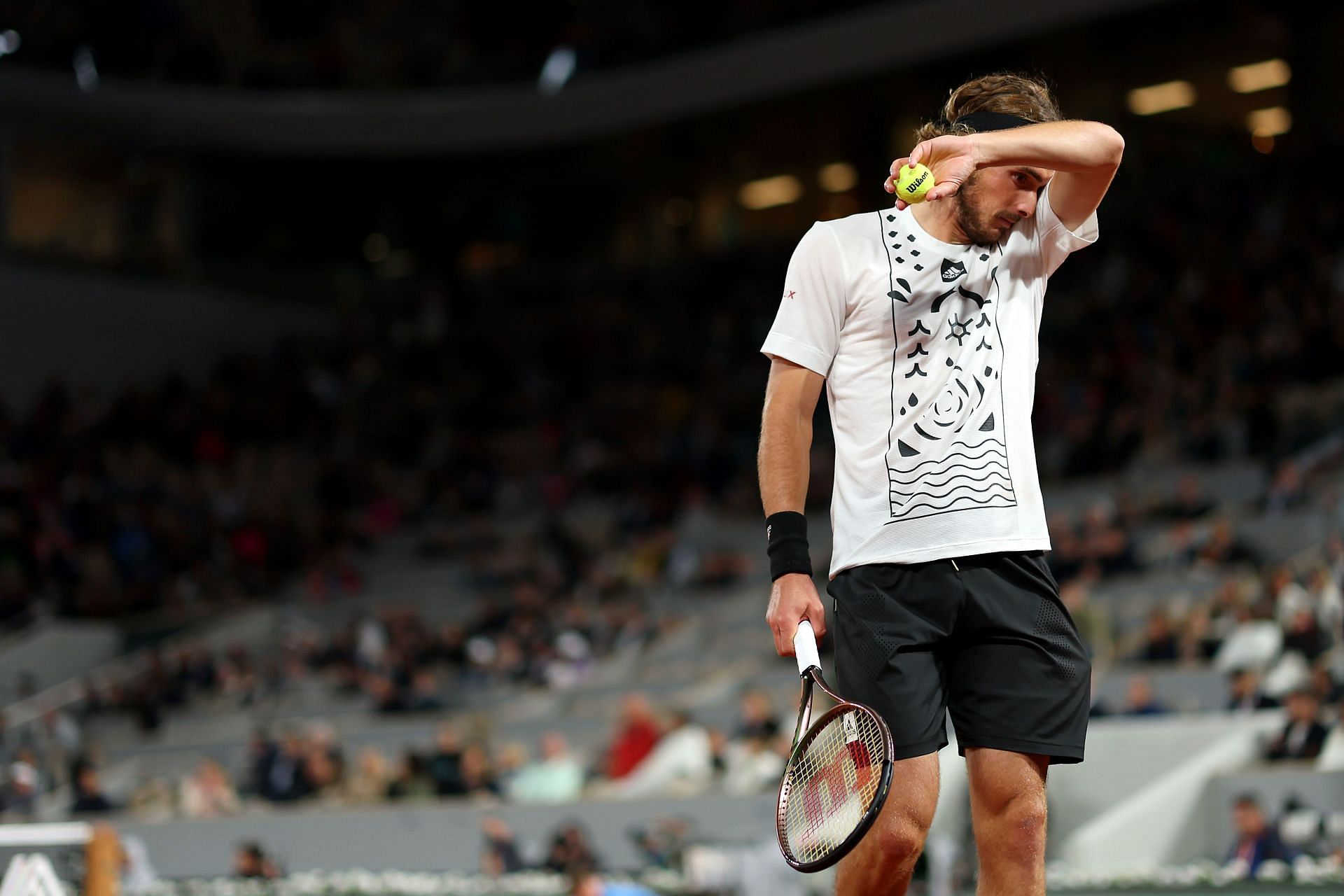
Why it is impossible to compare the consistency of men's tennis to women's tennis in Grand Slams

Less than 24 hours apart, Greece's No. 1 men's and women's tennis players experienced contrasting fortunes at the 2022 French Open. While Stefanos Tsitsipas clawed his way back from a two-set deficit against Lorenzo Musetti in his opener, Maria Sakkari fell in straight sets against Karolina Muchova in the second round.
Had the men's tennis matches been decided with a best-of-three too, Tsitsipas would have met the same unfortunate end as his compatriot. Instead, with the luxury of a five-setter, Tsitsipas held his nerve and relied on his experience to outlast his opponent. Felix Auger-Aliassime, Alexander Zverev, Carlos Alcaraz and Diego Schwartzman have all achieved the same over the last few days in Paris.
Sakkari, on the other hand, had no such opportunities. She lost two tight tie-breaks and the only reward she got was a plane ticket back home. It is the same in the case of every seeded women's tennis player who has been shown the door in Paris already -- Ons Jabeur, Garbine Muguruza, Emma Raducanu, Barbora Krejcikova and many more.
There is no guarantee that the results would have been vastly different if they had been allowed to play best-of-five encounters too, of course. But they should have been able to find that out for themselves. In the same way that men are allowed to use all their experience to come back into a contest, women should be able to as well.
Tsitsipas himself has expressed a similar sentiment in the past, remarking that Grand Slams would have seen different men lift trophies in singles if the finals had been decided in three sets.
The Greek was on the receiving end of a two-set comeback by Novak Djokovic in the final of the 2021 French Open, while Dominic Thiem turned the tables on Alexander Zverev after going two sets down in the final of the 2020 US Open. The reverse is also true, by extension: women's tennis would have seen different winners if matches were decided in five sets.
Calls for the same have been growing more vocal on social media recently, with many pointing out that the apparent chaos in women's tennis can be dialed back by implementing the change. Last year's US Open was a prime example of this, where two unseeded players reached the final in the form of Leylah Fernandez and Emma Raducanu.
Would it have been different if experienced players had the luxury of mounting comebacks late in the game? The French Open has seen eight different winners in the last eight years. Would that have been prevented if women had the same freedom that Djokovic and Rafael Nadal have had to stave off opponents in marathon five-setters?
This is only speculation and wishful thinking, but it is a line of thought worth exploring. At the very least, it is a line of thinking that should be remembered every time women's tennis is blamed for being too unpredictable. The men's circuit would be the same too if it had to stick to the same rules.
What are the arguments against women's tennis employing a best-of-5 format in Grand Slams?

But things are not as simple as deciding on one fine day that women's tennis matches will now go to five sets in Grand Slams. First, there is the schedule to consider: Grand Slams work overtime as they pack all the matches from all the different categories into two weeks.
Women's matches going to five sets will mess with the entire equilibrium, which is precarious as it is. Players are already complaining about being made to end matches very late, and that will only get worse if a change is enforced.
Then there is the issue with the players themselves, who will have to make huge adjustments to their game. As things stand, players who have short bursts of energy and can bash their opponents out of the contest even before they get a foot in the door have a natural advantage. A shift to five sets, however, will tilt the advantage towards persistent hunters who can wait their opponents out.
Finally, and more importantly, there is the nature of the courts as well. Hardcourt Slams - the Australian Open and the US Open - may not face a problem, but it is a different issue altogether with the other two.
Clay and grass being "live" surfaces, they will suffer significant damage with increased playing time. Anyone who has seen how the courts at Wimbledon look towards the end of the tournament can attest to the fact that it would be impossible to maintain them in optimum condition with the proposed change.
One of the proposed compromises is that both men and women play best-of-three for the first four rounds and best-of-five matches in the last three. While that will certainly bring some balance to the world of tennis, it is still not a perfect solution. Slams will have to workshop different solutions, bring in the analysts and see what can be done to bridge the gap.
Until then, any comparisons between men's tennis and women's tennis at Grand Slams and pretending one is more consistent than the other should be deemed unfair. Because, while the sport is the same, they do not play by the same rules at all.